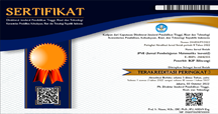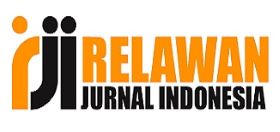PENGGUNAAN INFORMATION COMMUNICATION AND TECHNOLOGY (ICT) TOOLS DALAM MENDUKUNG PEMBELAJARAN MATEMATIKA INTERAKTIF
DOI:
https://doi.org/10.22460/jpmi.v4i5.p1033-1054Keywords:
Interactive learning, ICT tools, Mathematical softwareAbstract
References
Ahmad, J. (2018). Desain Penelitian Analisis Isi (Content Analysis). ResearchGate, (June), 1–20. Retrieved from https://www.researchgate.net/publication/325965331
Aktas, M. C., & Mumcu, H. Y. (2019). Pre-Service Elementary Mathematics Teachers’ Views on Geometric Constructions: Building on Paper or Interactive Whiteboard?. International Online Journal of Education and Teaching (IOJET), 6(3), 598–611.
Azuma, R. T. (1997). A survey of augmented reality. Presence: Teleoperators & Virtual Environments, 6(4), 355–385.
Badan Pengembangan dan Pembinaan Bahasa. (2016). Kamus Besar Bahasa Indonesia. Retrieved September 12, 2020, from https://kbbi.kemdikbud.go.id/
Daher, W., Baya’a, N., & Anabousy, R. (2018). In-service mathematics teachers’ integration of ict as innovative practice. International Journal of Research in Education and Science, 4(2), 534–543. https://doi.org/10.21890/ijres.428945
Das, K. (2019). Role of ICT for better Mathematics Teaching. Shanlax International Journal of Education, 7(4), 19–28. https://doi.org/10.34293/education.v7i4.641
Dictionary, C. (2020). Interactive.
Diegmann, P., Schmidt-Kraepelin, M., Eynden, S., & Basten, D. (2015). Benefits of Augmented Reality in Educational Environments - A Systematic Literature Review. Proceedings of the 12th International Conference on Wirtschaftsinformatik, 103. Retrieved from https://www.researchgate.net/publication/312147184_Benefits_of_Augmented_Reality_in_Educational_Environments_-_A_Systematic_Literature_Review%0Ahttp://aisel.aisnet.org/wi2015http://aisel.aisnet.org/wi2015/103%0Ahttps://aisel.aisnet.org/cgi/viewcontent.cgi
Figueiredo, M., Godejord, B., & Rodrigues, J. (2016). The development of an interactive mathematics app for mobile learning. 12th International Conference Mobile Learning, 75–81. IADIS Press.
Findley, K., Whitacre, I., & Hensberry, K. (2017). Integrating Interactive Simulations into the Mathematics Classroom: Supplementing, Enhancing, or Driving? North American Chapter of the International Group for the Psychology of Mathematics Education, 1297–1304.
GunÄaga, J., & Majherová, J. (2012). GeoGebra as a motivational tool for teaching and learning in Slovakia. North American GeoGebra Journal, 1(1), 2162–3856. Retrieved from http://geogebra.ssgg.sk.
Loong, E., Doig, B., & Groves, S. (2011). How different is it really?–rural and urban primary students’ use of ICT in mathematics. Mathematics Education Research Journal, 23(2), 189–211.
Mailizar, M., & Fan, L. (2020). Indonesian teachers’ knowledge of ICT and the use of ICT in secondary mathematics teaching. Eurasia Journal of Mathematics, Science and Technology Education, 16(1), 1–13. https://doi.org/10.29333/ejmste/110352
Pradono, S., Astriani, M. S., & Moniaga, J. (2013). a Method for Interactive Learning. CommIT (Communication and Information Technology) Journal, 7(2), 46. https://doi.org/10.21512/commit.v7i2.583
Saadati, F., Tarmizi, R. A., & Ayub, A. F. M. (2014). Utilization of information and communication technologies in mathematics learning. Journal on Mathematics Education, 5(2), 138–147. https://doi.org/10.22342/jme.5.2.1498.138-147
Sanusi, A. (2016). Metodologi Penelitian Bisnis. Jakarta: Salemba.
Sari, M., & Asmendri. (2018). Penelitian Kepustakaan (Library Research) dalam Penelitian Pendidikan IPA. Penelitian Kepustakaan (Library Research) Dalam Penelitian Pendidikan IPA, 2(1), 15. Retrieved from https://ejournal.uinib.ac.id/jurnal/index.php/naturalscience/article/view/1555/1159
Shulman, L. S. (1986). Those Who Understand Knowledge Growth in Teaching. Educational Researcher, 15(2), 4–14.
Tabaghi, S. G., & Sinclair, N. (2013). Using dynamic geometry software to explore eigenvectors: The emergence of dynamic-synthetic-geometric thinking. Teach Know Learn, 18, 149–164. https://doi.org/https://doi.org/10.1007/s10758-013-9206-0
Tang, M. (2011). Recognizing Hand Gestures with Microsoft ’ s Kinect. Palo Alto, Department of Electrical Engineering of Stanford University. Retrieved from http://www.stanford.edu/class/ee368/Project_11/Reports/Tang_Hand_Gesture_Recognition.pdf
Virrantaus, K. (2017). Interactive Learning in The Classroom – Not a competitor but A Partner For E-Learning. Retrieved from https://www.fig.net/resources/proceedings/fig_proceedings/korea/full-papers/pdf/session15/virrantaus.pdf
Yingprayoon, J. (2015). Teaching Mathematics Using Augmented Reality. 20th Asian Technology Conference in Mathematics, 384–391.
Zed, M. (2008). Metode Penelitian Kepustakaan. Jakarta: Yayasan Obor.

















